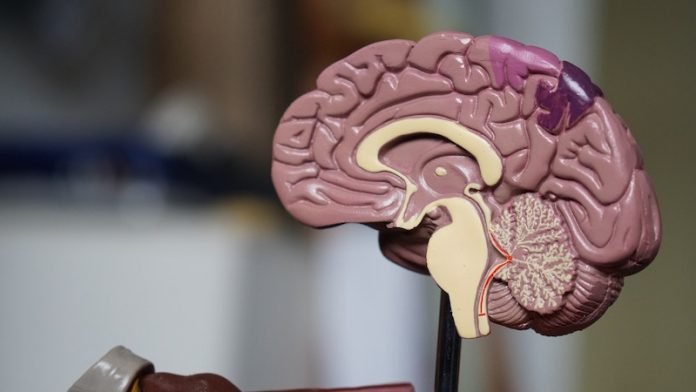
In a new study, researchers found that brain imaging of pathological tau-protein “tangles” reliably predict the location of future brain atrophy in Alzheimer’s patients a year or more in advance.
In contrast, the location of amyloid “plaques,” which have been the focus of Alzheimer’s research and drug development for decades, has little utility in predicting how damage would unfold as the disease progressed.
The results support researchers’ growing recognition that tau drives brain degeneration in Alzheimer’s disease more directly than amyloid protein.
At the same time, the study demonstrates the potential of recently developed tau-based PET (positron emission tomography) brain imaging technology to accelerate Alzheimer’s clinical trials and improve individualized patient care.
The research was conducted by scientists at the UC San Francisco Memory and Aging Center.
Alzheimer’s researchers have long debated the relative importance of amyloid plaques and tau tangles—two kinds of misfolded protein clusters seen in postmortem studies of patients’ brains, both first identified by Alois Alzheimer in the early 20th century.
For decades, the “amyloid camp” has dominated, leading to multiple high-profile efforts to slow Alzheimer’s with amyloid-targeting drugs, all with disappointing or mixed results.
Many researchers are now taking a second look at tau protein, once dismissed as simply a “tombstone” marking dying cells, and investigating whether tau may in fact be an important biological driver of the disease.
In contrast to amyloid, which accumulates widely across the brain, sometimes even in people with no symptoms, autopsies of Alzheimer’s patients have revealed that tau is concentrated precisely where brain atrophy is most severe, and in locations that help explain differences in patients’ symptoms (in language-related areas vs. memory-related regions, for example).
In the study, the team examined 32 participants with early clinical-stage Alzheimer’s disease, all of whom received PET scans using two different tracers to measure levels of amyloid protein and tau protein in their brains.
The participants also received MRI scans to measure their brain’s structural integrity, both at the start of the study and again in follow-up visits one to two years later.
The researchers found that overall tau levels in participants’ brains at the start of the study predicted how much degeneration would occur by the time of their follow up visit (on average 15 months later).
Moreover, local patterns of tau buildup predicted subsequent atrophy in the same locations with more than 40% accuracy.
In contrast, baseline amyloid-PET scans correctly predicted only 3% of future brain degeneration.
The team says the match between the spread of tau and what happened to the brain in the following year was really striking.
Tau PET imaging predicted not only how much atrophy they would see, but also where it would happen.
These predictions were much more powerful than anything they’ve been able to do with other imaging tools and add to evidence that tau is a major driver of the disease.
The results add to hopes that tau-targeting drugs currently under study at the UCSF Memory and Aging Center and elsewhere may provide clinical benefits to patients by blocking this key driver of neurodegeneration in the disease.
At the same time, the ability to use tau PET to predict later brain degeneration could enable more personalized dementia care and speed ongoing clinical trials.
The lead author of the study is neurologist Gil Rabinovici, MD, the Edward Fein and Pearl Landrith Distinguished Professor in Memory and Aging.
The study is published in Science Translational Medicine.
Copyright © 2019 Knowridge Science Report. All rights reserved.




